An approximation (ϵ~O(x³)) of a human person. Former elegant show pony made of maths. Transitioning (math autistic to words autistic). Jack of all niche technical hobbies.
Don't wanna be here? Send us removal request.
Text
Sdefa Sdaturday #21
My first youtube video is now live!
youtube
This is a video all about my musical conlang Sdefa! You’ll hear some music, learn the basics of how the language works, and go through a few examples in detail!
I couldn’t get into too much detail in a short(ish) video, so I didn’t cover Sdefa writing, but I plan to in a future video. The main example in the video is what I showed in last week’s post, but here it is again in both writing systems:
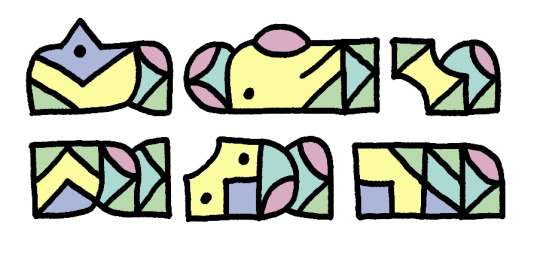

That means “You’re hearing Sdefa, a musical language that I made.” Now you get to actually hear it!
185 notes
·
View notes
Text
something i have always found really weird is when english texts italicize words from other languages.
i remember reading a book as a kid and the author continually italicizing the word tamales
80K notes
·
View notes
Text
It is utterly bonkers to me that people think of voiced sounds as “softer” than voiceless ones what the actual fricative do you mean /ð/ is the “soft th”
4 notes
·
View notes
Text
i think about this comment every now and again

6 notes
·
View notes
Text
Do you ever get nervous bc your conlang isn't as naturalistic or as well-thought-out as those of the literal masters of the craft and so that must mean it's Literally Garbage
423 notes
·
View notes
Text
"if the autistic unemployment rate is 80% why is the Discourse about autism so often around the experiences for whom it's a relatively manageable thing?"
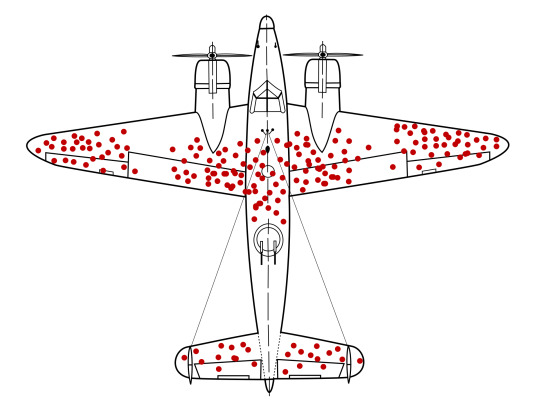
11 notes
·
View notes
Text
Yes, with the caveat that plural subjects don't have distinct agentive and patientive cases. For plurals, ambiguity is resolved with word order for transitive verbs, but there is currently no construction for handling that ambiguity when using an intransitive verb with an atypical activity.

We've seen the basic usage of transitive verbs. Let's take a look at intransitive verbs.
Kvembrian intransitive verbs come in two varieties, active and stative. Active verbs involve the volition of the participant (e.g. to jump) and have the participant decline for the agentive case. Stative verbs lack the volition of the participant (e.g. to fall) and have the participant decline for the patientive case.
Either way, the sole participant of an intransitive verb is treated as a subject for the purpose of conjugation and default word order.
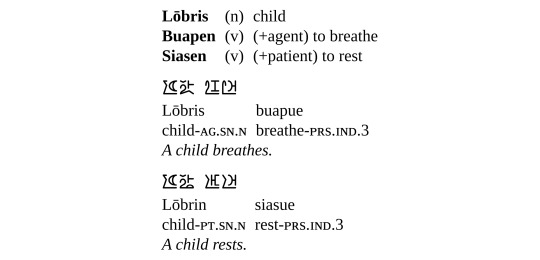
There is no marking to indicate that an intransitive verb is active or stative. The correct usage of each verb must be either intuited or memorized.
7 notes
·
View notes
Text

We've seen the basic usage of transitive verbs. Let's take a look at intransitive verbs.
Kvembrian intransitive verbs come in two varieties, active and stative. Active verbs involve the volition of the participant (e.g. to jump) and have the participant decline for the agentive case. Stative verbs lack the volition of the participant (e.g. to fall) and have the participant decline for the patientive case.
Either way, the sole participant of an intransitive verb is treated as a subject for the purpose of conjugation and default word order.

There is no marking to indicate that an intransitive verb is active or stative. The correct usage of each verb must be either intuited or memorized.
#conlang#constructed language#artlang#conworld#worldbuilding#fantasy worldbuilding#Kvembrian#Kvember
7 notes
·
View notes
Text
Looking forward to this :)
Conlang year 2025 · Day 1 - 4
I decided to try out @quothalinguist's conlang year, it is basically a series of daily prompts that guide you through the process of creating a new language, by the end of the year you will end up with a conlang that is developed enough to participate in relays and lexember, you can find it on quothalinguist.com

It looks like conlang year is mostly geared towards creating languages that are naturalistic and evolved from a proto-language, and the concept I have for this is not going to really fit into that, you'll see why once I start describing it, but I don't imagine that'll be too much of an issue, it's still useful to have a guide for the different aspects of the language I should focus on. I'll try to adapt the prompts to work with my idea and I guess I'll skip the ones that I can't figure out how to adapt.
I'll be combining many prompts together into single posts for convenience, I'll tag these posts as both #Conlang year and #Conlang year 2025 so you can search those in my blog to see them all if you want (once I name the language I will also add it to the tags, but the language doesn't have a name yet).
If you want to see all of the information from these posts compiled into one place I will be adding all of the information about the conlang I create on my website: tekseni.bearblog.dev
Day 1: Set an intention for your language
(warning: this gets a bit heavy, but I try not to make it too dour)
I haven't been feeling great lately, I won't go into details, I'll just say that it can be difficult to manage your emotions when the world seems to be in such a terrible state, living through historical events is not easy.
“I wish it need not have happened in my time,” said Frodo. “So do I,” said Gandalf, “and so do all who live to see such times. But that is not for them to decide. All we have to decide is what to do with the time that is given us.”
I know there's some people who say you have to be constantly staying informed on every bit of news because if you don't you're a bad person, but that's not a sustainable way to live. It's important for us to keep ourselves sane, if you're going to help others through turbulent times you have to make sure you have your own feet on firm ground. I won't be of much help if I'm having a crisis, so taking care of my own mental health is important, and for many of us that can include a bit of escapism and using art as an outlet, using art as motivation to keep going and enjoy life despite the circumstances. This conlang is my escapism.
With all of that being said, here's my 2 main goals for this conlang:
1: I want this language to make me smile
I want to create something that helps me to find some beauty and hope in the world, I want the choices I make with the language to make me smile, and I want to be able to have fun while working on it, without having to worry too much about how naturalistic it is or anything like that, so ideally I'd also avoid comparing this to other conlangs.
If we compare this to visual art, I'd say this is less like trying to create an awesome painting with perfect perspective, colors and composition, and it's more like me doodling in a sketchbook that is meant primarily for me, but I also want to share it with others in case they find it to be at least mildly interesting or it helps inspire them in some way.
It's not like my other conlangs don't bring me joy, I guess what I'm trying to say is that this time I will try to design the language without worrying about things like naturalism or trying too hard to make my worldbuilding interesting or deep, it's just a canvas where I can throw paint and let myself go wild, trying out things I normally wouldn't, and making choices based on my personal preferences instead of what I think I "should" do, so I guess that makes this is a personal language.
2: This is going to be a surrealistic conlang
I have already decided who the speakers of my language will be, I'll elaborate more in the following prompts but I currently call them "dream angels" because they're basically benevolent beings that exist in the world of dreams, and because of this I want to try my hand at making a surrealistic conlang, @dedalvs wrote an essay on fiat lingua about what such a language might look like, and I keep coming back to it every now and then because I love the concept.
Even before that essay was posted I remember thinking of what conlangs might look like if they were inspired by different art movements, and a surrealistic one fits particularly well into the dream world idea, it will also allow me to fulfill my first goal fairly easily; making something that makes me smile without having to worry about naturalism and letting myself experiment. I've always been drawn to surrealism for one reason or another, not entirely sure why but I know this is something I'm excited to work on.
I'm not expecting this to be the best surrealistic conlang out there, but it doesn't have to be, it just has to be fun for me, and it will work as a learning experience regardless, so if I want to try again at some point I will have a better idea of how to approach it. I'm sure someone out there will make an amazing surrealistic conlang one day and I'll be excited to see it when it happens.

Day 2: Set an intention for sharing your language
Basically the main audience is me, I hope that future me will be able to look at all the different translations, grammar choices and vocabulary I made and feel like it's a fun language that still brings me some joy in some way or another, even if I don't keep working on it for much longer after the conlang year has ended at least I hope it was a positive experience.
I also want to share the language online (on this blog and on my conlang website) mostly because I'm hoping that at least one person is going to look at my conlang and feel inspired, or maybe it will make them smile too, so I'm going to try to describe all the features in a way that is understandable for other conlangers.
Day 3: Determine your speakers and conworld
The basic idea is that there is another plane of existence, one we can't see when we're awake, and the world where dreams exist is connected to this other realm, so when we dream we sometimes come into contact with the ethereal beings that speak this language, and they are kind and loving.
The dream angels usually don't interfere with human affairs too much, but they sometimes help us by making nightmares go away and soothing the people they see, at least while the people are asleep (since they can't interact with us outside of dreams).
They also shift the way they speak to be a bit more familiar to the person they're encountering, so I imagine the phonology of their language might shift a bit from its default form depending on what your native language is, the language would still be unintelligible to you but it would sound a bit like someone speaking your L1 in a weird way (which also means that it will be easier for you to pronounce the language if you are able to speak back at them because you will at least get to use sounds you already know how to pronounce, though you're welcome to pronounce it in its original form).
These beings are very surreal in their appearance, there's probably different types of dream angels but the ones I'll be working with are kind of like a mix of various sea creatures, drifting through space peacefully, building all sorts of things and admiring the nature that exists in their world.
I imagine their settlements are built on floating islands full of all sorts of critters and nature, and their world as a whole is probably a bit weird and doesn't always seem to follow logical rules, in keeping with the kind of things you see in dreams, so they might look a bit like something you'd see in an M.C. Escher artwork, where you're not exactly sure what you're looking at, but it has a certain beauty to it.

Day 4: Describe (or design) your speakers
And finally here's a picture I drew of a prototypical dream angel:

They might look a bit intimidating or scary to you, but I chose to take inspiration mostly from various sea creatures because they help to convey this kind of ethereal and weirdly beautiful aesthetic, when I look at jellyfish I often wonder how those are living beings that exist in our world, they look more like they're inanimate objects drifting in the water and yet they're alive, and they're so mesmerizing and fascinating, like a living nebula.
I imagine different dream angels would have different characteristics, but in general they're basically like some sort of jellyfish with 3 main tentacle-like appendages, many thin tendrils, 6 insect-like arms, 6 little wings (because it makes them look a bit more angelic lol) and they have one eye, but no human has ever seen their eyes because it is always covered by something, in this case it's a butterfly, but whatever is covering their eye it does not prevent them from seeing, this is the dream world after all.
I think there might be other types of dream angels, and they're all able to speak a human-like language because they don't need a mouth to speak, they just telepathically send sounds to other beings, so the speakers of my language will be characterized by being similar to sea creatures, perhaps there's other dream angels that are more similar to other types of animals, or inanimate objects, maybe some are just completely out there and don't even look like anything we're familiar with as humans. By the way if you feel inspired to design your own dream angels go ahead! I think it'd be nice if I was able to inspire creativity in others with my work.
I'm also choosing to use a human-pronounceable phonology because I enjoy pronouncing the words and sentences of my conlangs, but perhaps at some other point I will make a different register of the language that uses different noises as phonemes, maybe sounds of water and nature, or maybe something like one of those really peaceful synths, after all their phonology is not limited by their physiology or even things like logic.
But anyway that's it for now, I feel a bit vulnerable putting myself out there so much, this feels a bit more personal than my other conlangs I've shared, it's not like a regular fantasy worldbuilding project or a fanlang or an a posteriori language, this one is very out there and weird, but again I want to share it in case other people find it interesting, and hey, we need more examples of surrealistic conlangs, so I'm more than happy to contribute to that.
27 notes
·
View notes
Text

Let's take a look at a simple Kvembrian sentence. The example here is in the present indicative. The default sentence order for an indicative statement is subject-verb-object (SVO). The subject is glossed as ᴀɢ (agent) and the object is glossed as ᴘᴛ (patient) because of how intransitive verbs work.

Each word has been inflected for its particular usage. Nialis is declined with the agentive singular neuter suffix (default). Uokos is declined with the patientive singular masculine suffix becoming uokon. Kisken is conjugated with the present indicative third-person suffix becoming kiskue.
Because the role of each word in the sentence is marked with a suffix, it is possible to reorder the words for emphasis without introducing ambiguity, for instance, in response to the question, "what is the cat seeing?" one could answer "uokon nialis kiskue."
#conlang#constructed language#artlang#conworld#worldbuilding#fantasy worldbuilding#Kvembrian#Kvember
14 notes
·
View notes
Text


Oh joy, verb conjugations.
Regular Kvembrian verbs end in -en and conjugate as follows. The patterns are straightforward for now but will most likely break down once we evolve the language through sound changes.

Once again, we're going to kick the can down the road and cover the usage of these in later posts once the grammar has been laid out. Here is how the verb, kisken (to see), conjugates.
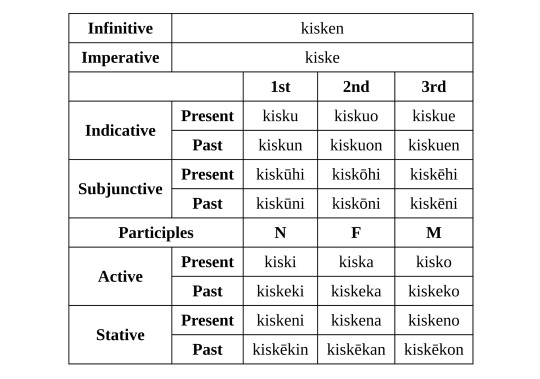
With the preliminaries out of the way, we should see an actual sentence or two next time!
Next up: Here and Now
16 notes
·
View notes
Text

Oh joy, verb conjugations.
Regular Kvembrian verbs end in -en and conjugate as follows. The patterns are straightforward for now but will most likely break down once we evolve the language through sound changes.

Once again, we're going to kick the can down the road and cover the usage of these in later posts once the grammar has been laid out. Here is how the verb, kisken (to see), conjugates.

With the preliminaries out of the way, we should see an actual sentence or two next time!
Next up: Here and Now
#conlang#constructed language#artlang#conworld#worldbuilding#fantasy worldbuilding#Kvembrian#Kvember
16 notes
·
View notes
Text
i think a big part of expanding your intellectual curiosity and trying to learn new things about the world is to abandon the shame of not knowing things. don't blame "the US school system" (which US school system????), don't blame your teachers, don't blame society, but embrace the fact that you are going to be learning new things constantly, throughout your life. practice saying "i really need to read about that" or "does anyone know of any good sources to learn about xyz?" or "hold on i gotta go check wikipedia/a world map/the dictionary/the news." every single day, there will be something you don't know already. that something doesn't have to be embarrassing. instead it can be an opportunity to learn something new
44K notes
·
View notes
Text
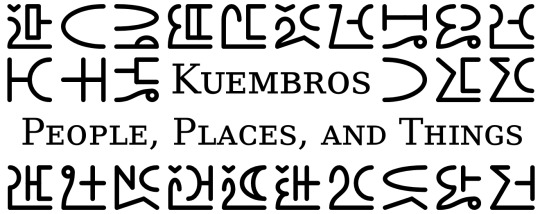
Let's talk nouns. Kvembrian is a fusional language that suffixes nouns based on grammatical gender, number (singular or plural), and case (role within a sentence).
In keeping with Kvembrian as an accessible naming language for a fantasy setting, the vowels used for neuter, feminine, and masculine nouns are -i, -a, and -o respectively. Sometimes -a and -o are raised to -e and -u.
There are four cases, active, stative, genitive, and dative. The usage of these will be detailed in a future post. The active case is the lemma form, so when transliterating Kvembrian names into other languages, they typically end in -is, -as, or -os.

Here are examples of how the nouns, nebris, eokas, and krotos would be declined in sentences.

There are a number of pronouns in Kvembrian. In addition to the earlier factors we now need to consider grammatical person as well. Unlike English, there is a clusivity distinction in the first person plurals between exclusive (us but not you) and inclusive (me/us as well as you). There is also a distinction in number for the second person (as in you vs y'all or variations thereof).

Note that at the moment, the third person pronouns are simply regular declensions of the stem, m-.
Next up: Action
#conlang#constructed language#artlang#conworld#worldbuilding#fantasy worldbuilding#Kvembrian#Kvember
11 notes
·
View notes
Text

It took a little longer than expected, but we got there! Lets talk about syllables, sounds, and the writing system.
The writing system is a syllabic alphabet, i.e. it has forms for individual letters corresponding to individual sounds, but they are arranged into blocks each corresponding to a single syllable. Let's take a look at an example, Kuembros.

If a syllable starts with a consonant, it goes on the left. The only consonant clusters in this language are formed with a plosive followed by an r, which is marked in the top left if present. The vowel(s) go in the top right. If there is a consonant at the end, it is written at the bottom connected to the initial consonant. Otherwise, a simple horizontal line takes its place.
Here are the consonants with their corresponding glyphs. Only m, n, and s may be at the end of a syllable. Their ending forms are shown underneath the table.
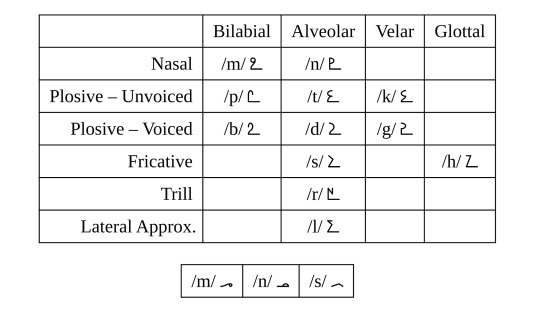
The first table below shows the plain vowels. This is the 5-vowel system. The second table shows the possible vowel combinations along with their typical realizations. Some of these are long vowels which are held for a greater duration (e.g. ā /aː/), some are diphthongs which glide from one vowel to another (e.g. /ai/ as in eye), and some starting with an i or u may be realized as a semivowel (y in you, and w in we respectively). Note that the IPA symbol for the English consonant y is /j/.
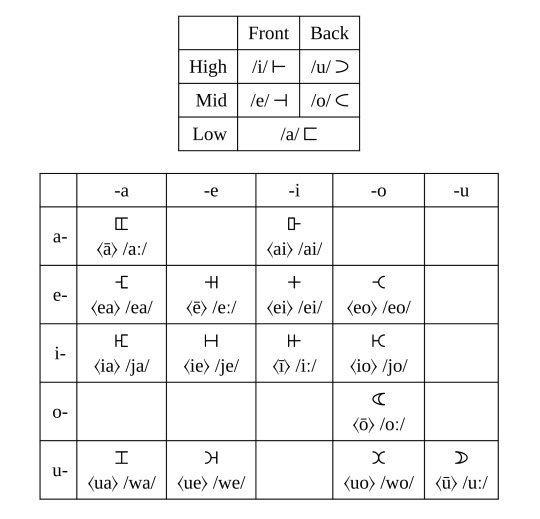
So there we have it. If you want to puzzle out some examples of the script, the banner at the top contains some randomly generated syllables of various forms.
Next up: People, Places and Things
#conlang#constructed language#artlang#neography#constructed script#orthography#conworld#worldbuilding#fantasy worldbuilding#Kvembrian#Kvember
22 notes
·
View notes
Text
People don't like to admit it bcs cringe or w/e but Homestuck really did revolutionize the webcomic as a storytelling medium and I am endlessly frustrated that before webcomic artists could really stretch our legs fucking webtoonz swooped in, set a new, more restrictive standard, and then monetized and monopolized the ever living fuck out of the concept of The Webcomic until it drove away anyone who couldn't be a professional quality manga artist for free, and now the only webcomics that actually feel like spiritual successors to Homestuck are so obscure they're basically cult classics that you have to beg people to read.
Like it's just so wild to be in high school and see Homestuck be like "we're using like fifteen different artistic mediums to tell this story bcs we can" and be really fucking inspired by that, only to grow up and see basically every webcomic ever have to conform to One Single Standard or fucking perish.
87K notes
·
View notes
Text

Introducing, Kvembrian! Referred to as such perhaps optimistically by a beastfolk city-state with continent-conquering ambitions, it is the most widespread (spoken) language in the lowlands.
We do our conlanging a bit backwards and often start with the script and then build the phonotactics out of its constraints. We had been wanting to do a syllabic alphabet for a long time and finally figured out an aesthetic that we like. A few days of coding later, we now have a tool to convert the romanization to the glyphs you see in the image above.
More to come!
#conlang#constructed language#artlang#neography#constructed script#orthography#conworld#worldbuilding#fantasy worldbuilding#Kvembrian#Kvember
17 notes
·
View notes